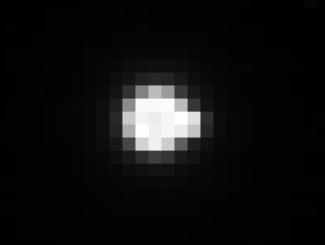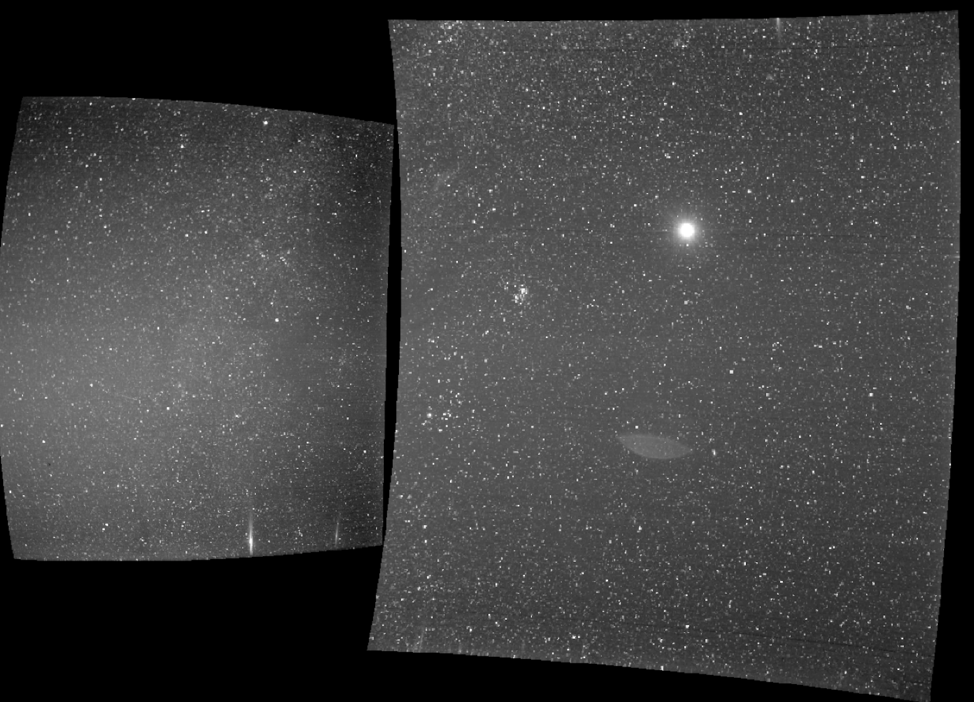Parker Solar Probe Looks Back at Home
Posted on 2018-10-24 13:30:20On Sept. 25, 2018, Parker Solar Probe captured a view of Earth as it sped toward the first Venus gravity assist of the mission. Earth is the bright, round object visible in the right side of the image.
The image was captured by the WISPR (Wide-field Imager for Solar Probe) instrument, which is the only imaging instrument on board Parker Solar Probe. During science phases, WISPR sees structures within the Sun's atmosphere, the corona, before they pass over the spacecraft. The two panels of WISPR's image come from the instrument’s two telescopes, which point in slightly different directions and have different fields of view. The inner telescope produced the left-hand image, while the outer telescope produced the image on the right.
Zooming in on Earth reveals a slight bulge on the right side: that is the Moon, just peeking out from behind Earth. At the time the image was taken, Parker Solar Probe was about 27 million miles from Earth.
The hemispherical shaped feature in the middle of the right-hand image is a lens flare, a common feature when imaging bright sources, which is caused by reflections within the lens system. In this case, the flare is due to the very bright Earthshine. Close passes by Venus and Mercury may occasionally create similar patterns in the future, but these are limited cases and do not affect the science operations of the instrument.
Some of the visible objects in the image — like Pleiades to the low-left of Earth in the right-hand image and the two bright objects, Betelgeuse and Bellatrix, near the bottom of the left-hand image — appear elongated because of reflections on the edge of the detector.
- Sarah Frazier, NASA Goddard Space Flight Center

WISPRearthviewOct18
Credit: NASA/Naval Research Laboratory/Parker Solar Probe
High-Res Image
WISPRearthviewOct18
Credit: NASA/Naval Research Laboratory/Parker Solar Probe
High-Res Image